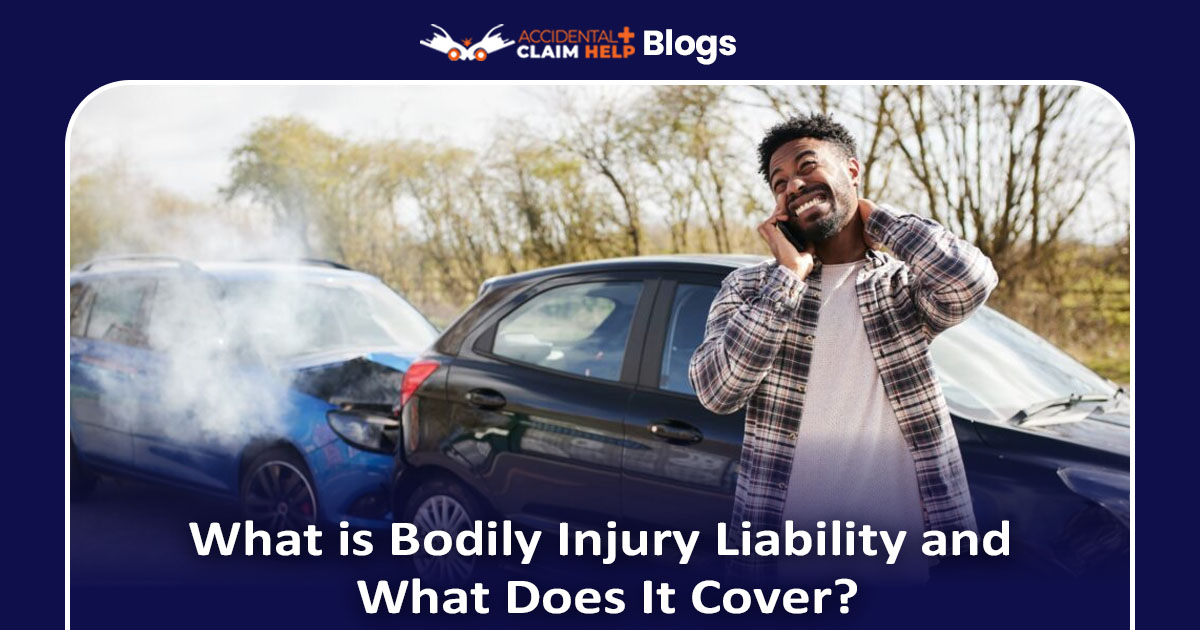What is Bodily Injury Liability, and What Does It Cover?
Bodily injury liability insurance is a type of car insurance coverage that helps cover the costs of injuries to other people if you’re at fault in an accident. If you’re involved in a crash and another driver, passenger, or even a pedestrian is hurt, your bodily injury liability insurance may help pay for their medical expenses, lost wages, and even legal fees if a lawsuit arises.
This coverage doesn’t apply to your own injuries or damage to your vehicle. Instead, it’s focused solely on the injuries and associated costs incurred by others involved in the accident. It’s a safeguard that ensures you’re not personally responsible for large financial expenses if you’re deemed at fault.
What Does Bodily Injury Liability Cover?
Let’s take a closer look at the key areas that bodily injury liability covers:
- Medical Expenses
One of the main components of bodily injury liability is covering the medical bills of those injured in an accident you caused. This can include:

- Emergency services (ambulance rides, hospital visits, etc.)
- Medical treatments (surgeries, follow-up care, etc.)
- Rehabilitation (physical therapy, necessary medical devices like crutches or wheelchairs)
It ensures that the people you injure get the medical care they need without the burden of paying out of pocket, provided the expenses don’t exceed your policy limits.
- Lost Wages and Income
If someone you injure can’t return to work because of their injuries, bodily injury liability can help cover the lost wages or income they would have earned if they were not injured. For example:
- A driver unable to work due to physical therapy treatments.
- A pedestrian who can’t return to their job because of long-term injuries from the accident.
This coverage might also extend to other financial losses, such as losing the ability to perform daily tasks or work-related activities due to the accident.
- Legal Fees
In the event of a lawsuit following an accident, you could find yourself facing significant legal fees if the injured party decides to sue you for damages. Bodily injury liability coverage can help cover these legal expenses, such as:
- Attorney fees
- Court costs
- Any settlements or judgments if you’re found at fault in the case
This is particularly important if you face a lawsuit that goes to court, as legal fees can be substantial, and bodily injury liability can help alleviate that burden.
Who is Covered Under Bodily Injury Liability?
Bodily injury liability isn’t just limited to the driver you injured. It extends to a wide range of individuals involved in the accident. If you’re found at fault, the following parties might be covered:
- Other Drivers:
If another driver is injured in the crash, your bodily injury liability will help pay for their medical costs.
- Passengers:
Whether they’re in your car or someone else’s, passengers who are injured can be covered under your liability policy.
- Pedestrians:
If your vehicle strikes a pedestrian, bodily injury liability can help cover their injuries.
- Uninsured or Underinsured Individuals:
Even if the other driver lacks sufficient insurance, your bodily injury coverage may still apply.
However, it’s essential to note that bodily injury liability does not cover injuries to you or your passengers if you’re the at-fault driver. For that, you would need additional coverage like personal injury protection (PIP) or medical payments coverage (MedPay).

State Requirements and Coverage Limits
Every state has different laws regarding the minimum amount of bodily injury liability coverage you must have. Typically, you’ll find that your state will require you to carry coverage with two limits:
- Per-person limit:
This is the maximum amount your insurance will pay for an individual person’s injuries. For example, if your per-person limit is $50,000, that’s the highest your insurance will pay for any one person’s injuries, regardless of how many people are involved in the accident.
- Per-accident limit:
This is the maximum your insurance will pay for the total amount of injuries sustained by all the people involved in the accident. For example, if your per-accident limit is $100,000, and three people are injured, your bodily injury liability would cover their combined expenses up to that $100,000 amount.
Be aware that if your injuries or the injuries of others exceed the limits of your bodily injury liability coverage, you could be responsible for paying the remaining costs out of pocket.
How Does Bodily Injury Liability Insurance Work?
Bodily injury liability insurance steps in when you’re found at fault for a car accident that causes injury to someone else. It doesn’t cover your own injuries, but instead helps pay for the medical bills, lost income, and sometimes legal fees of the other party involved.
Here’s how it typically works:
- You cause an accident
Whether it’s a minor collision or a serious crash, if another person gets hurt and you’re responsible, your bodily injury liability coverage comes into play.
- A claim is filed
The injured person (or people) may file a claim with your insurance company for the damages caused by the accident.
- Your insurance pays up to your limits
Your policy has set limits (per person and per accident). The insurance will pay up to those limits for covered expenses like:
- Emergency medical care
- Hospital stays
- Ongoing treatments (like physical therapy)
- Lost income due to injury
- Legal fees if you’re sued
Anything beyond your limit is your responsibility. If the total cost of the injury is more than what your insurance covers, you may have to pay the rest out of pocket.
That’s why choosing the right coverage limit is important. Many drivers opt for more than the state-required minimum so they’re better protected in case of a serious accident.
How Much Coverage Do You Need?
While many states have minimum requirements for bodily injury liability, it’s often recommended to consider increasing your limits to ensure you’re adequately protected. The minimum coverage may not be sufficient to fully cover the costs if you cause a severe accident with multiple injuries. You might want to consider raising your limits to avoid financial stress if you’re sued.
In some cases, drivers opt to add umbrella insurance to further protect themselves. This type of policy provides extra coverage beyond your primary car insurance limits, ensuring that you’re not left paying for any additional expenses out of pocket.
Is Bodily Injury Liability Enough?
Bodily injury liability is essential for protecting your finances in case of an accident. However, it’s just one part of your auto insurance policy. To get comprehensive protection, you may want to consider adding other coverage options like property damage liability, collision insurance, or comprehensive coverage to protect against a range of possible incidents.
FAQs
It’s best to have higher than state minimum coverage, such as $100,000 per person and $300,000 per accident. This helps protect you against significant medical and legal costs.
No, bodily injury liability covers others if you’re at fault but not your own injuries. For your injuries, you’ll need additional coverage like PIP or MedPay.
“Full coverage” typically means having enough liability limits to cover serious accidents, like $100,000 per person and $300,000 per accident, along with other types of insurance.
Liability means legal responsibility. In the case of an injury, it refers to being financially responsible for the harm caused to someone else.
Examples include paying for another driver’s hospital bills after an accident you caused or compensating a pedestrian injured due to your driving.
Accidental bodily injury is physical harm that happens unexpectedly like injuries from a car crash, slip, or fall not caused intentionally.
Bodily injury liability covers injuries to others in accidents you cause, while property damage liability covers damage to someone else’s property.
Summary:
Bodily injury liability coverage is there to protect you financially if you’re responsible for injuring someone in a car accident. It can help cover their medical bills, lost income, and even legal fees if you’re taken to court. But having the minimum coverage required by your state might not be enough. If the expenses go beyond your policy limits, you could be left paying out of pocket. That’s why it’s important to review your current policy, think about your financial risks, and speak with your insurance provider to make sure you have enough coverage in place. It’s always better to plan ahead than face costly surprises later.







